The Current
Archive
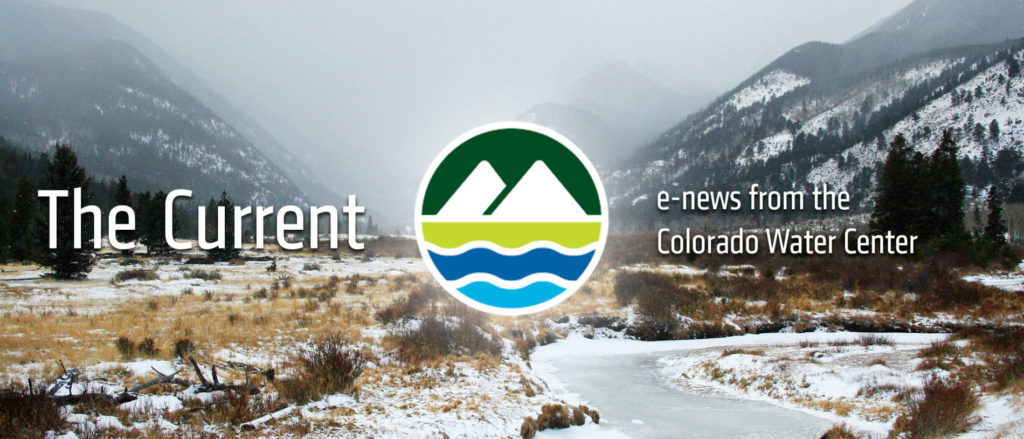
The Current is the Center’s monthly e-newsletter dedicated to stories about water faculty, staff, and students in Colorado, as well as important information regarding the water community.
Stay informed about water-related research, education, events, jobs, grants, scholarships, and our community partners by subscribing now.
We want to hear from you. Send us information about your upcoming event, job, scholarship, and other water-related news you would like us to consider sharing with our network. Email us at TheCurrent@colostate.edu.
Spotlights
December 2021
E-Newsletter Spotlights
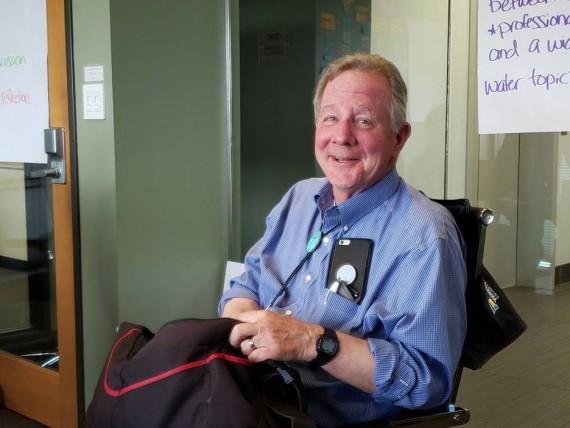
The Colorado water community lost a legend on November 30th, 2021, with the passing of Justice Greg Hobbs. Greg, who would have turned 77 on Dec. 15, passed away peacefully with his family – wife Bobbie, son Dan and daughter Emily – by his side after suffering a pulmonary embolism.
For both the legal and water communities, and really all whose paths crossed his, the loss is heartbreaking. We not only lost one of our most knowledgeable legal minds but also lost one of our most able and accomplished speakers, teachers, writers and historians. Those who knew Greg understand.
There will be a celebration of Greg’s life at a later, more COVID-safe time. The family asks that in lieu of flowers donations be made to Water Education Colorado. You can donate in Greg’s memory online at wateredco.org/greg-hobbs-memoriam.

Brad Udall, the Colorado Water Center’s Senior Water & Climate Scientist, was featured on CBS 60 Minutes to discuss the current situation of the Colorado River Basin. At this time, water flows & levels are at record-breaking lows which can be attributed to climate change and population growth. Seven states and 40 million people rely on the Colorado River which provides an abundance of services such as hydroelectricity, drinking water, recreation, and irrigation.
When asked about the basin’s future, Brad stated, “We have fully utilized this system. We have overallocated it and we now need to think about how to turn some of this back because the only lever we control right now in the river is the demand lever. We have no control over the supply.” A solution is still not apparent; however, it was acknowledged that with optimism and changes in water efficiency, the West’s current water crisis could find a constructive and positive outcome.
Click the image above to take a boat ride on Lake Powell and learn more about the Colorado River Basin crisis.
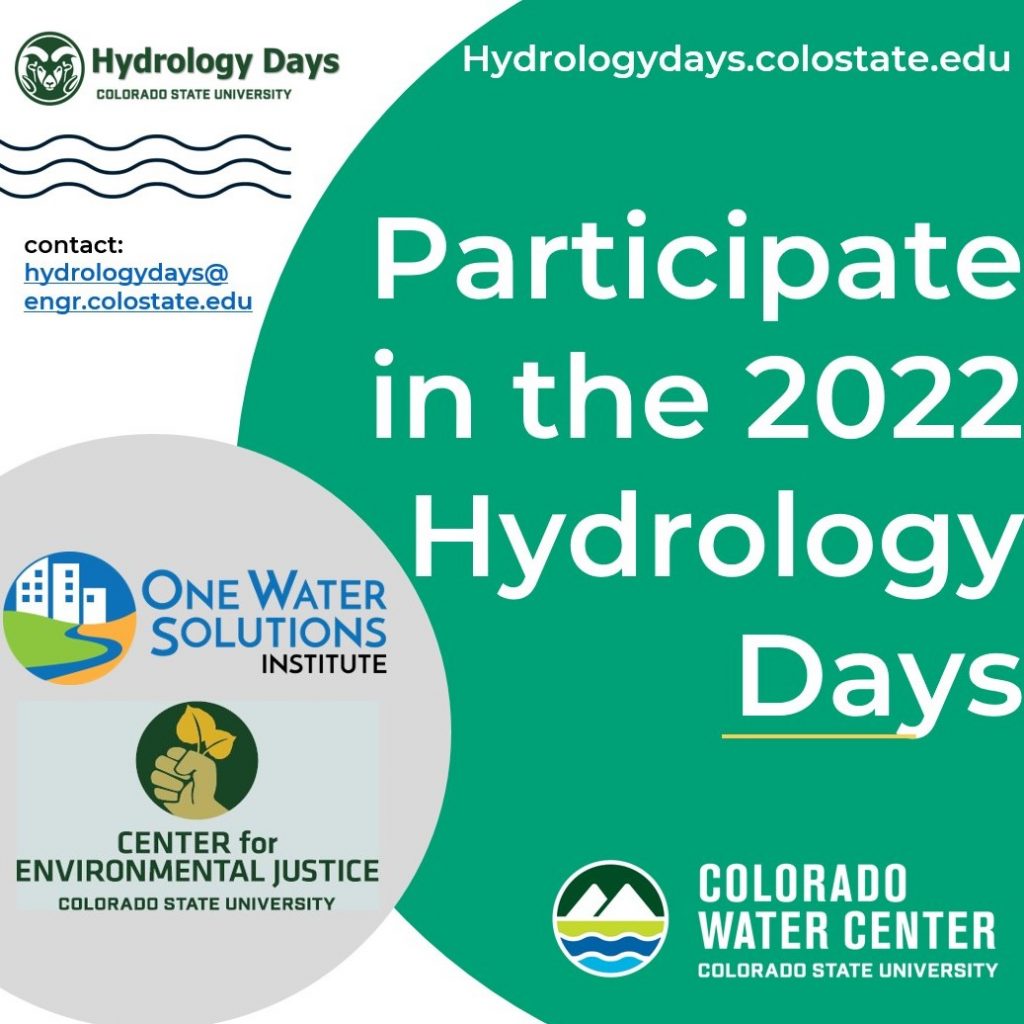
Students, faculty, and staff from the College of Liberal Arts are encouraged to submit abstracts for the Annual AGU Hydrology Days event. Seeking abstracts from students, faculty and staff for events April 25-27, 2022.
Presentations are welcome on all topics in hydrology, including Economics of Water, Food-Energy-Water Nexus, Social Equity & Environmental Justice, Socio-Ecological Systems, Western Water Law, etc.
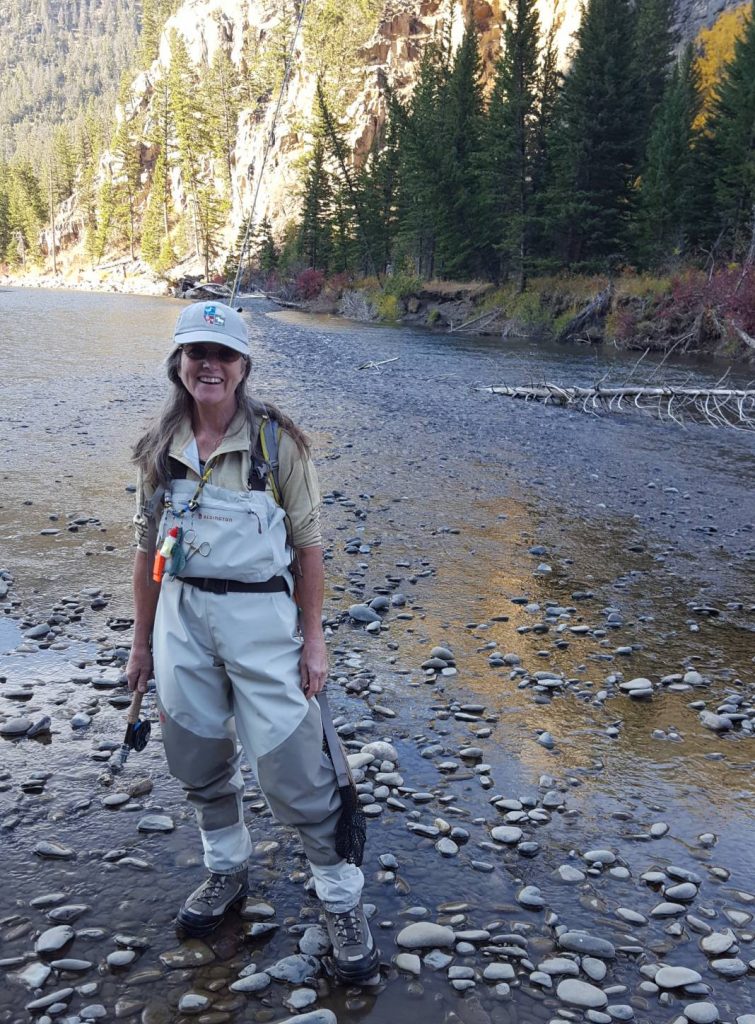
While most people take cover inside when it rains, Susanne Cordery grabs her umbrella and heads out to watch where the water flows and puddles. “My job is making sure that CSU complies with environmental regulations,” and though there is a lot of paperwork, she says, “I like to get out and do inspections, especially stormwater inspections. When you’re out in the rain, you get to see the stormwater features that we designed functioning. And I find that gratifying.”
Spotlights
April 2021
Annika Weber
Student Spotlight
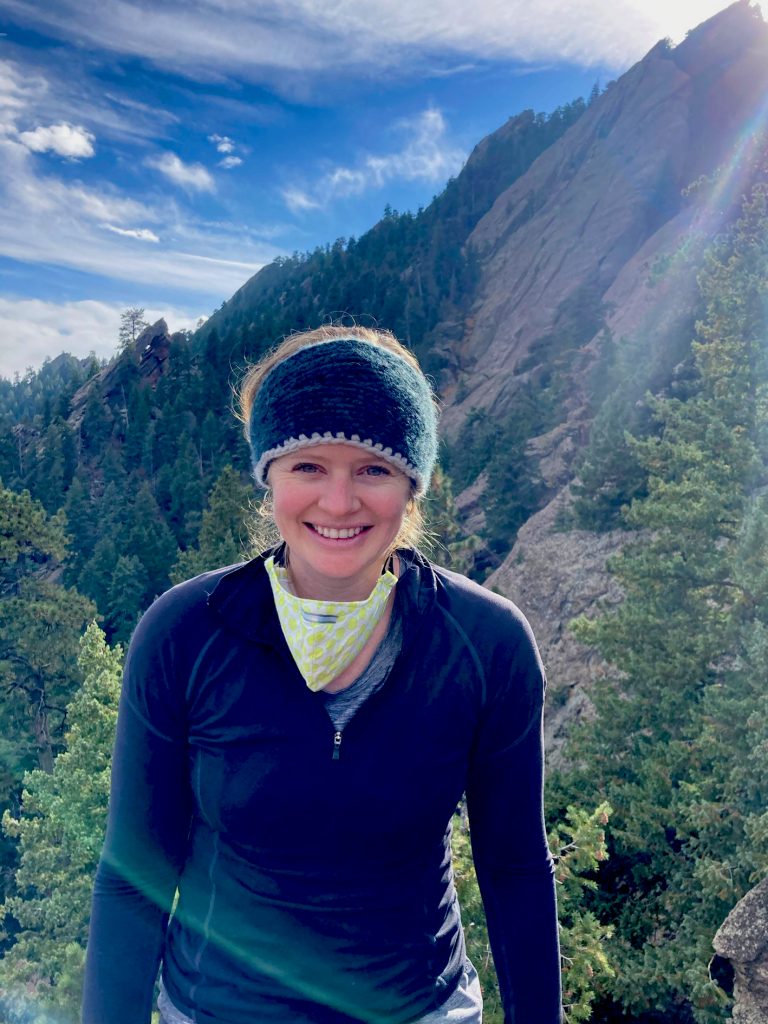
Teaching English in Spain and conducting research in Dublin with an NSF grant inspired Annika Weber to shift from her biochemistry background to engage with people in her future career. Pursuing her master’s degree in nutrition in England, she tested soils in a community garden in a region with a large steel industry. This experience steered her interest in studying metals in soils, water, and crops.
Before joining CSU for her doctorate, she traveled for a year with her husband, bouncing from Italy to Denmark, and finally to Argentina, where her husband’s family lives. They enjoyed a beautiful experience while she taught English online and volunteered by chopping wood in Patagonia. Suddenly their travels were cut short. In response to the COVID pandemic, borders began to close. Weber and her husband rushed to return to the U.S., arriving in Colorado in March, three months before her program was planned to start. Fortunately, she was able to begin early, giving her a jump start on her research.
Weber targets the question of how to improve human health around the world. She studies the benefits of rice bran with Dr. Elizabeth Ryan, associate professor in the Department of Environmental and Radiological Health Sciences. Rice is dominant in the diet of people throughout Asia, but arsenic is naturally prevalent in the soils and water.
“Many plants absorb what’s in the soil,” Weber says. It depends where the heavy metal is absorbed in the plant and if it’s a part that humans would eat. “For example, in beans, heavy metals are stored in the outer part of the shell, but we don’t eat that part.” In rice, heavy metals are stored in the outer husk layer. When rice is processed and turned into white rice, the husk is discarded as rice bran.
Interested in methods to improve infant and child nutrition, Weber works with Dr. Ryan to understand the health benefits of rice bran. They find that rice bran “is a great source of healthy fats, vitamins, and fiber. It is a superfood. This could help with child nutrition in developing countries, but we want to make sure it is safe.” In many countries throughout Asia, white rice is a staple food source, and their culture is unlikely to change to include brown rice in their diets. Taking an alternative approach, Weber suggests people are more likely to eat rice bran as an ingredient, with particular benefits as an additive to infant cereal.
“There is still much we don’t know about what happens internally. We are still learning about the mechanisms and pathways that digest our food and how they may be influenced by what we do and do not eat and drink.” The best they can do is test and infer. The primary issue they are hoping to understand is how a healthy gut microbiome acts as a defense. Water is the largest source of arsenic in Asia, so eliminating arsenic is impossible. Arsenic and other pollutants may be absorbed in different levels if they are in food and fiber versus water. The next part of her project will investigate how that difference impacts the gut microbiome.
As a trainee of the InTERFEWS program, she studies methods of growing rice to absorb less arsenic. Rather than flooding rice paddy fields, their findings show that using alternate wetting and drying techniques prevents more arsenic from being absorbed. This method of watering then desaturating the soils stresses the rice and decreases yields. Results will contribute to the next phase of her research by developing a known reference of quantities of arsenic in rice depending on where and how it’s grown.
Weber is dedicated to researching the best and most accessible methods of improving infant and child nutrition worldwide. Though still in her first year at CSU, her career is sure to contribute to this field of study.
Dr. Elizabeth Ryan
Faculty Spotlight
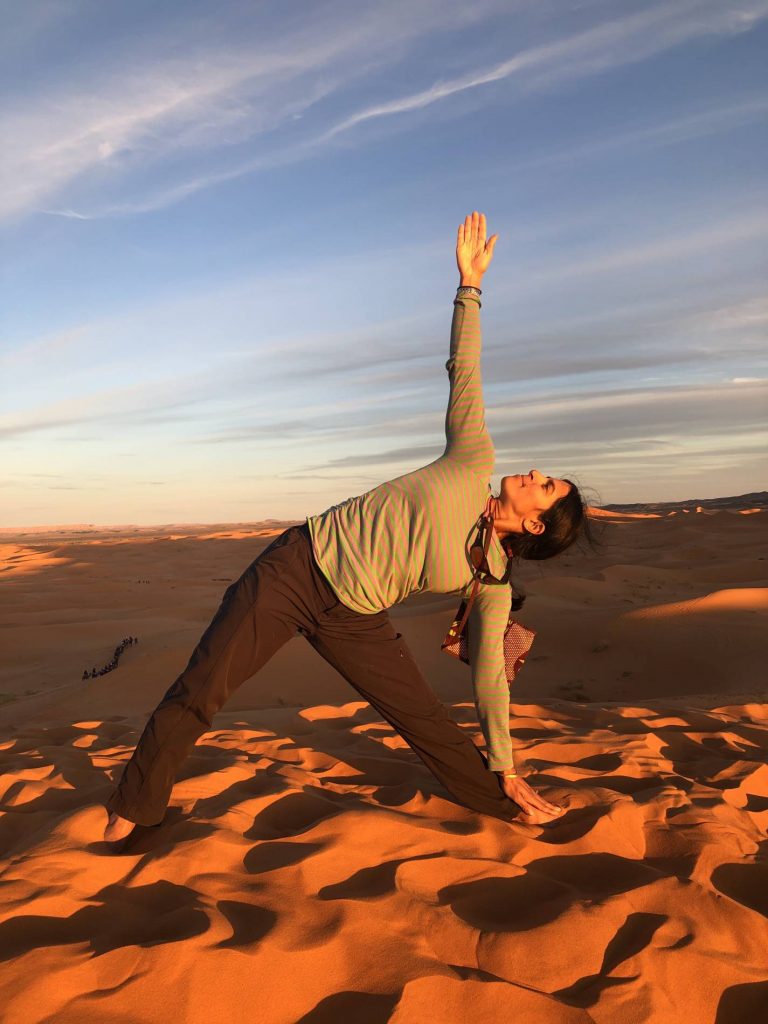
Global access to clean water is a challenge we may never solve, but Dr. Elizabeth Ryan is working on solutions to help our bodies protect against bacterial and chemical pollution. After spending two years in Nepal with the Peace Corp and as a first-generation American whose family emigrated from India, Ryan’s awareness of the impacts of water-borne disease guided her research career.
Over two billion people lack access to treatment for microbial pollutants in drinking water. People whose only water source is continuously contaminated with E. Coli and other diarrheal pathogens experience ongoing physical and mental ailments throughout their lives. Chronic diarrhea during the growth of children leads to malnutrition.
“The impacts of diarrhea three to five times a year during critical stages of development in the first year or even decade of life impacts your ability to grow. It’s hard to recover from it, even if you stop having that exposure later in life. You may not be able to absorb food well. You are still dealing with impacts to your immune system,” Ryan describes the heart of the issue. In countries with contaminated drinking water, young adults do not know a different life. A lifetime of exposure limits intellectual development and impairs the growth of a healthy gut mucosal immune system.
As a toxicologist, her work took an unexpected turn, switching from understanding what is in the water to how we can recover from the impacts of water pollutants. Addressing solutions to bacterial exposures as well as other contaminants like pesticides, or naturally occurring arsenic, Ryan looks at the food we eat and how it affects what we absorb from the environment into our bodies.
“Food to promote health is an overlying theme and an opportunity,” Ryan says, summing up her ongoing projects. “We need a way to recover and intervene. Rice bran is a solution that merits attention in combination with hygiene and sanitation programs.” Rice bran is the husk of rice, an agricultural waste product created when harvested rice is processed into white rice. Ryan earned a stream of funding over the past several years to investigate the health benefits of rice bran.
“We aren’t going to stop pathogen or chemical exposures completely, but rice bran protects against diarrhea and supplies vital nutrients and vitamins.” Along with rice bran, legumes, which are drought-tolerant crops, also offer a sustainable and accessible way to get all the right nutrients and experience benefits in the near and long term. Ryan is also looking into how rice bran can help your body limit absorption of arsenic and prevent colorectal cancer.
Ryan’s work explores issues globally and locally, and she appreciates the ability to train students to understand different dimensions of water.
Health is just as important to her personal life. Ryan spends most of her free time outdoors, hiking, snowboarding, and paddling with her husband and three children, as well as practicing yoga.
Archive
Madison Jara
Student Spotlight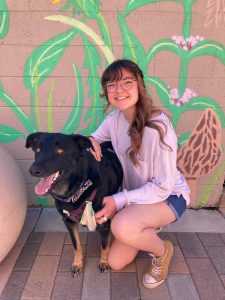
Alan Martuch
Student Spotlight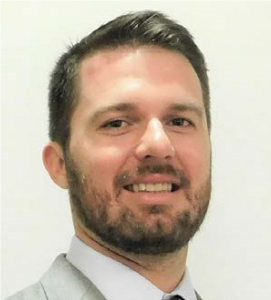
Jack Miera
Student Spotlight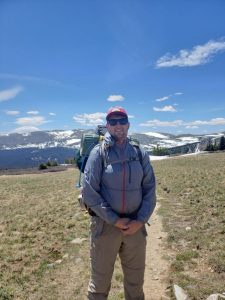
Dr. Susan De Long
Faculty Spotlight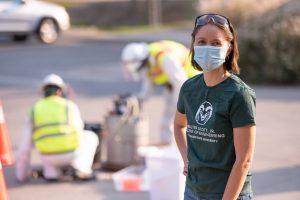
View the April 2021 issue of The Current.
Annika Weber
Student Spotlight
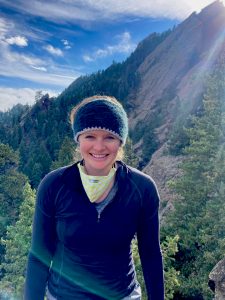
Teaching English in Spain and conducting research in Dublin with an NSF grant inspired Annika Weber to shift from her biochemistry background to engage with people in her future career. Pursuing her master’s degree in nutrition in England, she tested soils in a community garden in a region with a large steel industry. This experience steered her interest in studying metals in soils, water, and crops.
Before joining CSU for her doctorate, she traveled for a year with her husband, bouncing from Italy to Denmark, and finally to Argentina, where her husband’s family lives. They enjoyed a beautiful experience while she taught English online and volunteered by chopping wood in Patagonia. Suddenly their travels were cut short. In response to the COVID pandemic, borders began to close. Weber and her husband rushed to return to the U.S., arriving in Colorado in March, three months before her program was planned to start. Fortunately, she was able to begin early, giving her a jump start on her research.
Weber targets the question of how to improve human health around the world. She studies the benefits of rice bran with Dr. Elizabeth Ryan, associate professor in the Department of Environmental and Radiological Health Sciences. Rice is dominant in the diet of people throughout Asia, but arsenic is naturally prevalent in the soils and water.
“Many plants absorb what’s in the soil,” Weber says. It depends where the heavy metal is absorbed in the plant and if it’s a part that humans would eat. “For example, in beans, heavy metals are stored in the outer part of the shell, but we don’t eat that part.” In rice, heavy metals are stored in the outer husk layer. When rice is processed and turned into white rice, the husk is discarded as rice bran.
Interested in methods to improve infant and child nutrition, Weber works with Dr. Ryan to understand the health benefits of rice bran. They find that rice bran “is a great source of healthy fats, vitamins, and fiber. It is a superfood. This could help with child nutrition in developing countries, but we want to make sure it is safe.” In many countries throughout Asia, white rice is a staple food source, and their culture is unlikely to change to include brown rice in their diets. Taking an alternative approach, Weber suggests people are more likely to eat rice bran as an ingredient, with particular benefits as an additive to infant cereal.
“There is still much we don’t know about what happens internally. We are still learning about the mechanisms and pathways that digest our food and how they may be influenced by what we do and do not eat and drink.” The best they can do is test and infer. The primary issue they are hoping to understand is how a healthy gut microbiome acts as a defense. Water is the largest source of arsenic in Asia, so eliminating arsenic is impossible. Arsenic and other pollutants may be absorbed in different levels if they are in food and fiber versus water. The next part of her project will investigate how that difference impacts the gut microbiome.
As a trainee of the InTERFEWS program, she studies methods of growing rice to absorb less arsenic. Rather than flooding rice paddy fields, their findings show that using alternate wetting and drying techniques prevents more arsenic from being absorbed. This method of watering then desaturating the soils stresses the rice and decreases yields. Results will contribute to the next phase of her research by developing a known reference of quantities of arsenic in rice depending on where and how it’s grown.
Weber is dedicated to researching the best and most accessible methods of improving infant and child nutrition worldwide. Though still in her first year at CSU, her career is sure to contribute to this field of study.
Dr. Elizabeth Ryan
Faculty Spotlight
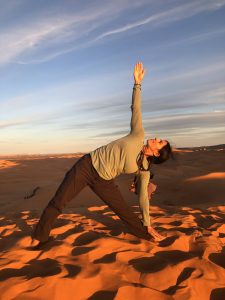
Global access to clean water is a challenge we may never solve, but Dr. Elizabeth Ryan is working on solutions to help our bodies protect against bacterial and chemical pollution. After spending two years in Nepal with the Peace Corp and as a first-generation American whose family emigrated from India, Ryan’s awareness of the impacts of water-borne disease guided her research career.
Over two billion people lack access to treatment for microbial pollutants in drinking water. People whose only water source is continuously contaminated with E. Coli and other diarrheal pathogens experience ongoing physical and mental ailments throughout their lives. Chronic diarrhea during the growth of children leads to malnutrition.
“The impacts of diarrhea three to five times a year during critical stages of development in the first year or even decade of life impacts your ability to grow. It’s hard to recover from it, even if you stop having that exposure later in life. You may not be able to absorb food well. You are still dealing with impacts to your immune system,” Ryan describes the heart of the issue. In countries with contaminated drinking water, young adults do not know a different life. A lifetime of exposure limits intellectual development and impairs the growth of a healthy gut mucosal immune system.
As a toxicologist, her work took an unexpected turn, switching from understanding what is in the water to how we can recover from the impacts of water pollutants. Addressing solutions to bacterial exposures as well as other contaminants like pesticides, or naturally occurring arsenic, Ryan looks at the food we eat and how it affects what we absorb from the environment into our bodies.
“Food to promote health is an overlying theme and an opportunity,” Ryan says, summing up her ongoing projects. “We need a way to recover and intervene. Rice bran is a solution that merits attention in combination with hygiene and sanitation programs.” Rice bran is the husk of rice, an agricultural waste product created when harvested rice is processed into white rice. Ryan earned a stream of funding over the past several years to investigate the health benefits of rice bran.
“We aren’t going to stop pathogen or chemical exposures completely, but rice bran protects against diarrhea and supplies vital nutrients and vitamins.” Along with rice bran, legumes, which are drought-tolerant crops, also offer a sustainable and accessible way to get all the right nutrients and experience benefits in the near and long term. Ryan is also looking into how rice bran can help your body limit absorption of arsenic and prevent colorectal cancer.
Ryan’s work explores issues globally and locally, and she appreciates the ability to train students to understand different dimensions of water.
Health is just as important to her personal life. Ryan spends most of her free time outdoors, hiking, snowboarding, and paddling with her husband and three children, as well as practicing yoga.
View the March 2021 issue of The Current.
Ella Bump
Student Spotlight
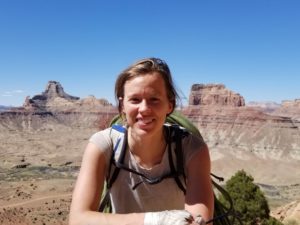
Guiding rafts down Colorado’s white waters for four years laid the foundation of Ella Bump’s appreciation for our water resources. Not only did she find herself drawn to western water issues, she saw the critical need to help people overcome their estrangement from the natural world.
Originally from the Midwest, growing up in Wisconsin and Minnesota, Bump knew she wanted to end up in Colorado after visiting for a vacation. During her undergraduate education at the University of Colorado, she spent every summer on the water. During her first year as a guide in 2012, she felt the impact of the lowest water levels seen in 20 years. Her attunement to water levels drove her involvement in water and rivers.
Boosting her Spanish language skills, Bump spent a semester in Spain, which led to her connection with Dr. Steven Fassnacht, Professor in the Department of Ecosystem Science and Sustainability, who also studied abroad in Spain. Dr. Fassnacht pulled Bump onto his 2020 CoWC Education and Engagement Project, “Kids Poetry on Water – Creating K-12 curriculum integrating water science and poetry”. She played a significant role in the success of the project and co-authored the research article featured in the December 2020 issue of Colorado Water.
Bump discusses that “even in a place where you think there is enough access to the outdoors, it is not there for everybody. There is a huge barrier to a lot of people.” For their project, Bump and Fassnacht brought students to the Poudre River, engaging them with poetry writing exercises. “Taking kids to the river has a broader point to make. Poetry and science are all about observing your environment, using your senses to feel what it is to be in nature,” she says.
A component of the project drew on historical observations in the Romancero, a collection of medieval Spanish poetry, to reveal how humans interacted with the landscape where scientific records are lacking. Bump is further exploring the concept of pulling data from qualitative records. For her master’s thesis, she reconstructs snowpack of the San Juan Mountains, combining data from tree rings and historical journals. For example, she found anecdotes of homes in Silverton built with extra front doors on the second floor to allow for easier winter access and compared that with snow measurement records.
Noting her findings, Bump discusses her motivation for analyzing historic qualitative observations, “it paints a more comprehensive picture of how snowpack is changing. Tree rings show years with precipitation levels above and below the average, but trees don’t capture short-term extremes, they won’t show fast spring snowmelt. Tree rings over the past 20 years have a weaker relationship to instrumental records of precipitation than previous time periods.”
Bump will graduate from CSU this summer, and she hopes to continue incorporating education into her research and advocating for science communication. Working in snow hydrology would be ideal, she plans to seek career opportunities in forecasting and hydrology.
Mackenzie Warden
Student Spotlight
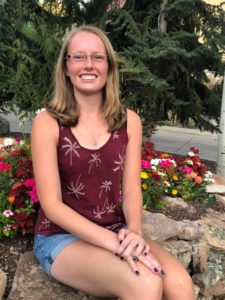
Embarking on a project to uncover past climates through medieval poetry, Mackenzie Warden follows her life’s unique thread of connecting to water in uncommon ways. Rather than taking up snow sports, this Loveland native appreciates warmer waters as an avid swimmer and past member of her high school swim team. Her studies also depart from the traditional for her major. Combining her passion for science with her Spanish language skills, she is working on an independent study project with Dr. Steven Fassnacht, Professor in the Department of Ecosystem Science and Sustainability.
The Romancero, a collection of medieval Spanish poetry, mentions the four main rivers of Spain. Warden focuses on the 19 poems citing the Ebro River. “These poems personify the river, characterizing it as a friend or confidant,” says Warden. Though the poems are fiction, there are facts from which they derive valuable clues about the ecology of the river.
Warden describes other details, “how people related to their surrounding environments then and does that hold true for today.” Through the project, she connects to the past, saying, “I feel like it’s a way to make poetry and history more tangible when the writing discussed water quality, it became more relatable.” She notes her surprise that topics from her courses in Hispanic cultures and past civilizations in Spain line up so well with the poetry. Commenting on the perception of poetry as dense and confusing, she says, “it’s worth it to dig in and explore; it’s surprising what you’ll find.”
Details of Warden’s methodology are in her article “The Hydro-Social Implications of Water Metaphors in Poetry: Transmogrification Challenges in an Example from the Medieval Spanish Romancero,” featured in CoWC’s special issue of Colorado Water on Hydrology Days.
After graduating this spring, Warden plans to spend a year gaining professional experience. Next, she will attend law school to become an environmental or water lawyer. She hopes to attendUniversity of Colorado’s environmental law program.
View the February 2021 issue of The Current.
Brendan Kelley
Student Spotlight
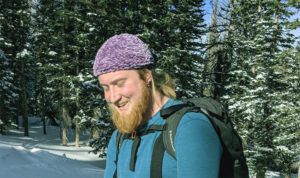
How can virtual reality games teach science? Can VR foster empathy to motivate action on climate change? Brendan Kelley is creating interactive experiences with VR to do just that.
An avid video gamer, Kelley jumped on the first commercially available VR system. Immediately, he saw the potential, asking himself, “what can I do with this?” His personal interest in technology led him to earn a position as an intern with CSU’s Office of Vice President for Research, where Kelley first merged his VR hobby with science.
The Ram Reality Hackathon, hosted annually by OVPR, invites students and community members to learn from virtual reality experts, develop an immersive experience, and compete for cash prizes. Kelley and his team won second place in 2018 with their interactive experience “The Path We’re On.” Climate change is difficult for people to relate to because of the large timescale and separation from immediate direct impacts. This VR program simulates three scenarios that scientists expect to see within 100 years, giving the user “something they could not experience otherwise,” like watching ice caps melt or the sea level rising. The goal of providing this virtual, first-hand experience is to build empathy and foster action to address climate change. This project revealed a new realm of possible VR applications for Kelley.
Collaborating with Dr. Steven Fassnacht, Professor in the Department of Ecosystem Science and Sustainability, on the 2020 CoWC Education and Engagement Project, Kelley shifted to using VR to communicate hydrology to high school students. The project “Kids Poetry on Water – Creating K-12 curriculum integrating water science and poetry” focused on melding creative writing with an exploration of nature. As an extension of the project, Kelley developed a VR proof of concept to provide a virtual “hands-on” experience in nature to give students exposure to water science. While this project is pending due to a lack of funding, the idea is promising.
“The potential of VR is exciting. It’s not just games,” says Kelley. Applications for VR are growing slowly. His work is “very much a self-driven experience.” Discussing his VR team, he says, “it was a personal interest that drove us to learn these skills.” Unfortunately, formal training on VR development is limited. There is little content for VR in comparison to traditional computer-based interactive programs. VR is slow to develop, which makes it expensive and is further hindered by the feedback of a lack of community and a lack of content. Kelley hopes that academia will spur advancement in the field of VR, with fantastic applications like interactive anatomy and radiological health lessons. “VR can be used as a tool for any discipline,” he says.
Kelley is working toward his master’s degree in the Department of Journalism and Media Communications. After completing his MS, he plans to shift back to computer science for his Ph.D. He is interested in understanding the cognitive side of VR. There is not much research behind what people are actually experiencing when they put on the headset. He wonders, “how does VR affect us differently because of the natural body interactions?” Kelley sees the future expansion of VR into other parts of society and wants to help guide the way.
Dr. Stephanie Malin
Faculty Spotlight
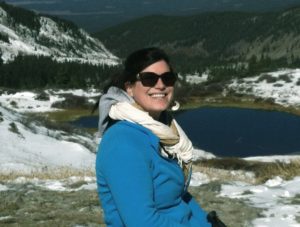
Interacting with nature led to a passion for stewardship for Dr. Stephanie Malin. Playing in her neighborhood creek and connecting with the outdoors instilled empathy and prompted her into veganism at 13. Discovering environmental sociology as an undergrad, she had a revelation; she wanted to formally study how people interact with their environment.
Dr. Malin reflects on her expertise and how her love of camping fueled her research. “I don’t feel comfortable conducting research until I understand the landscape. Being a natural resource sociologist, it’s important to connect with the landscape. I need to understand where the headwaters, sites of extraction, and communities are.”
Early in her career, Dr. Malin was intrigued by uranium production and now has circled back to the issue, “it is interesting how we have chosen to tinker with this volatile element,” she says. She works at the nexus of food, energy, and water, understanding how they fit together while we are separated from the processes. The role of water and how we interact with it affects our wellbeing and health. Her recent work studies the impacts of uranium mining at the northern rim of the Grand Canyon. The Havasupai Tribe, who have a historical connection to water in the Canyon, work to protect their right to clean water. If that water is depleted or polluted from mining, results may be detrimental to their way of life.
As a CoWC Water Fellow, Dr. Malin appreciated the opportunity to prove herself with members of the western water community. Curious about the water sources of unconventional oil and gas production, her research required trust from the community. “I wanted to explore how the industry was able to access water in a region where water is so heavily appropriated,” she says, describing her motivating research question. “It was humbling to learn Colorado water law and systems of water rights, not just its legal components, but also its political and economic sides. As a researcher, it’s been incredibly rich, with nuanced implications of relationships to water,” she says. Dr. Malin expanded her work with CoWC as a Water Research Team grantee in 2019, and she serves on the Center’s Faculty Executive Committee.
As a co-founder and co-director of the Center for Environmental Justice, Dr. Malin was thrilled to help launch the Center in 2019, an outcome of five years of capacity-building by the Environmental Justice (EJ) Working Group. The Center encourages collaborations among faculty and students across campus who work in diverse ways around environmental justice issues and connecting with EJ communities. While teaching environmental justice can be daunting to cover these wicked problems, working with bright, engaged students gives her hope that we can overcome difficult challenges.
View the January 2021 issue of The Current.
Mahshid Ghanbari
Student Spotlight
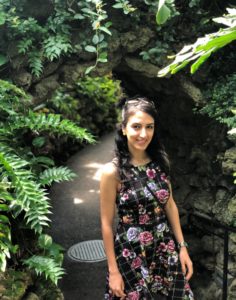
Mahshid Ghanbari discovered her innate mathematical skills as a young child. Her father is also a civil engineer and supported her education, sending her to one of the best schools in Iran. Moving to Malaysia for her master’s degree sparked her love of traveling. Her research interests then brought her to Colorado where she would like to stay after she graduates. Still, she misses her family in Iran who she has been separated from for the past five years.
Talent and passion for statistical analysis in water research drives Mahshid. She applies her knowledge to understanding flood risk caused by climate change. “Flooding is not just about a storm or hurricane,” she explains that there are also chronic risks from “sunny day flooding” which is repetitive throughout the year. Seasonal high tides bring water into urban areas, destroying property without the presence of a storm.
Collaborating with her advisor and a professor in Florida, Mahshid developed a risk assessment framework to characterize flood losses for their case study in South Florida. “We will have more extreme weather around the world. Flood adaptation strategies should consider climate change and sea level rise” she says. She applied a unique approach to the question, combining analysis of both major extreme flooding with chronic nuisance flooding. Previous studies only incorporated one type of flooding, not both together. This work won her significant recognition.
Mahshid’s findings were startling. By the end of the century, chronic risks from sunny day flooding may exceed those caused by hurricanes and storms under future sea level rise scenarios in Miami-Dade County. This type of flood risk assessment could be applied around the world. Elaborating on her concerns she says, “if we don’t consider the increased risk, loss will increase significantly.”
Research on flooding developed Mahshid’s expertise in extreme value analysis. Recent studies are looking into the impacts of compound events, events that are sequential or simultaneous. A single storm may cause moderate flooding, but when a storm coincides with high tide the results may be severe. She worked on the estimation of compound flooding risk and presented her results at the 2020 AGU Hydrology Days webinar. She explores this topic as part of her work on a project for the Urban Water Innovation Network. On the opposite end, instead of analyzing loss from too much water, as a part of a new project, she is estimating the chance of drought combined with heatwaves under climate change.
This is where Mahshid hopes her work will continue. She would like to work on natural hazards as extreme events and understand the compounding effect of these extremes. In the future, Mahshid aims to become a professor and share her knowledge with students.
Dr. Melinda Laituri
Faculty Spotlight
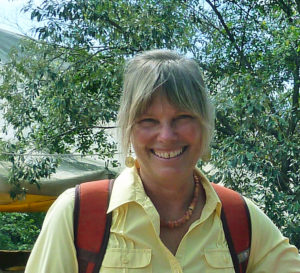
The relationship between general and specific is a core concept of geography and a “part of all the work I have done,” says Melinda Laituri reflecting on her career as she retired in 2020. A trailblazer in her field, Laituri was one of only two geographers at CSU when she started 25 years ago.
“I have drilled in deeply to very specific places, but then tying that back to larger geographic concepts and seeing commonality around the globe and what goes on in different places. Everybody is struggling with the pretty much the same suite of issues but have a whole set of different resources that are available to them due to their geography.”
When GIS first became commercially available, she dove into the tool. She entered a critical stage in her career as a woman in technology. The first iterations of GIS were clunky and required a large high-end workstation. Considering how user-interaction with the software has changed from programming command lines to point-and-click, Laituri explains why she prefers the former, “point and click obscures and hides what we do with the data.” The benefit of the current GIS software is that it is accessible to “all different types of users, not just computer scientists.” She suggests that there is a responsibility to the user to understand what is happening behind the scenes. This idea is a fundamental part of her approach to geography.
In 2008, Laituri took advantage of a unique funding opportunity and founded the Geospatial Centroid. She began with a small team of faculty and engaged graduate students by launching the annual GIS in Higher Education Summit, which helped direct the Centroid’s creation. “There was an increasing need for geospatial data literacy as it’s the backbone of how we operate in society,” she says. “There was a synergy around creating the Centroid” and providing opportunities for students to gain experience and employment. By invitation, the Centroid moved to the library. This new home allowed the Centroid to be centrally located and separate from the constraints of any single college.
Two pivotal experiences shaped Laituri’s role as an educator and advocate. As a Rachel Carson Fellow and Jefferson Science Fellow, she contemplated how to be thoughtful in doing analysis and understanding the ethical implications of her research. She strives to give people a voice supported by the sound science of her work.
While GIS is an incredibly valuable tool, Laituri uses other methods to teach and make connections. “With GIS, you can get lost in the technology, and you can forget the bigger picture,” she describes how she steps away from it. A favorite tool of hers is “sketch mapping.” With pencil and paper, she has students and community members draw their home, or a route from Point A to B and important landmarks to get to those places. She explains, “it can help break down barriers, and gives people a common map to share things.”
Laituri will stay connected to the CSU and geography community. Among other roles, she will remain on the advisory board of the Center for Environmental Justice, which she co-founded. Next year she will focus her time on one project for the U.S. Department of State. They are examining and developing mitigation strategies to address the second-order impacts due to COVID-19 from the economic shutdown, healthcare access, and more.
Most of all, Laituri is looking forward to spending more time with her family. Through all of her career and international travels, her husband has been supportive, “I’ve been very lucky,” she comments.
View the December issue of The Current.
Quinn Shiraishi
Student Spotlight
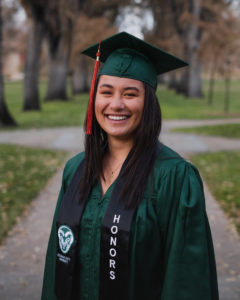
SWIM Graduate, Natural Resources Management, Department of Forest and Rangeland Stewardship
A childhood spent outdoors in Hawaii brought controversial water issues to the forefront of Quinn Shiraishi’s attention. Her father was an Eagle Scout and encouraged her to spend time outside in the year-round pleasant weather of their home island, Maui. She took advantage of a special program in high school participating in classes that keyed her into water rights and water policy issues in Hawaii. Although surrounded by an endless ocean of water her hometown watershed has a limited fresh water supply and the use of that resource came under scrutiny as more water was diverted for commercial use.
As Quinn planned her future education and career, she knew she wanted to study water. She researched many programs around the country and settled on the Natural Resource Management major in Warner College of Natural Resources with the Sustainable Water Interdisciplinary Minor (SWIM). She appreciated the interdisciplinary nature of the minor. Where her other coursework lacked policy and social aspects of water issues, she filled in those gaps with SWIM courses, giving her a well-rounded education. “Each project broadened my perspective,” she says.
After her graduation, Quinn hopes to work in the Pacific Northwest as a forestry technician. She says that eventually, she plans to “take everything I’ve learned and give back to the community I grew up in.”
Daniel Dominguez
Student Spotlight
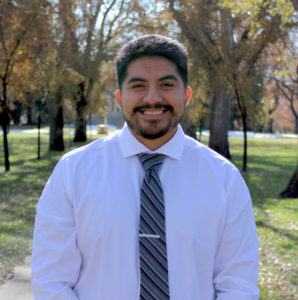
SWIM Graduate, Watershed Science, Department of Ecosystem Science and Sustainability;
CoWC Water Sustainability Fellow
Growing up in inner-city San Diego gave Daniel Dominguez few opportunities in his youth to get into nature, and as an adult, he made every effort to change that. Daniel served in the Marine Corps where he traveled to new places, saw the outdoors, and learned about water issues. The new experiences inspired Daniel. He took several road trips throughout North America, hiking, kayaking, and camping in national parks and preserved lands. On one of his travels, he met a park ranger who shared a fascinating revelation with Daniel. The glaciers they were currently observing would be gone by the time Daniel would have his own kids to take sightseeing.
Although Daniel began his degree in biomedical engineering, that experience of seeing glaciers that would not exist for future generations to see stuck with him. He switched his major to Watershed Science and signed up for SWIM to take electives with sustainability aspects. One of the courses required for SWIM was Issues in Environmental Economics. For that course, he researched the economic benefits of glaciers. He found that there is more concern than the water, “we care about these features that are disappearing, and can we really put a price on that.”
Daniel participated in a study abroad program in South Africa where they learned about the ecological problems caused by poaching and how it is tied to financial stress. Part of that project involved Daniel collecting water stories from locals who are impacted by these issues to discover how they could help. “I learned there is a lot more that ties into these big issues. Interdisciplinary work is needed in water resources,” he says. “Students in any field could benefit from SWIM, it helps to understand how you can tie natural resources into your work.”
As a former CSU Water Sustainability Fellow, a CoWC program for students from historically underrepresented communities to learn about important Colorado water issues, and to engage their voices in addressing water challenges, Daniel and the rest of the cohort worked to understand how water ties into the design and materials sectors. Their goal was to find sustainable and innovative solutions that could help businesses cope with the effects of climate change.
“My project focused on human dimension approaches to water issues that incorporated the knowledge I learned in South Africa to identify gaps with the current approaches to water issues. I proposed that communities could give insights into where their water supply bottlenecks were. For example, I found that the repair of water pumps limited access to water, and aid should focus on that aspect instead of building another pump that the locals don’t know how to fix.”
Graduate school holds the next steps for Daniel. He was awarded the prestigious 2021 Marshall Scholarship and was featured in the SOURCE. He will be attending the Sustainable Water Environments MSc program at the University of Glasgow as his first destination. He hopes that an advanced degree will help him tie the scientific water knowledge that he has now to rural communities and water policy.
View the November issue of The Current.
Ben Gannon
Student Spotlight
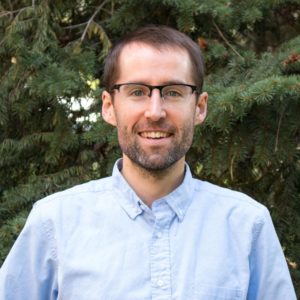
Our northern Colorado community is focused on the impacts of the Cameron Peak, East Troublesome, Mullen, and other 2020 wildfires. As concerns over the potential degradation of our water resources grow, some may wonder if the size and severity of these fires could have been mitigated. Ben Gannon studied the potential benefits of proactively reducing forest fuels and improving fire containment to mitigate wildfire risk to water supplies. “There is no silver bullet,” he says, addressing wildfire risk takes diverse strategies.
Gannon’s work in forest ecology and restoration planning led him to work in water research. Forests provide high-quality water, but when they burn in large and severe wildfires, there can be undesirable impacts to water supply from eroded ash, sediment, and other contaminants. He collaborated with a team of CSU and U.S. Forest Service researchers to assess wildfire risks to source water supplies. They analyzed the likelihood of a wildfire occurring, the intensity of a burn, how the watersheds are affected, and how important a water source is for a community. The outcomes of this research improve decision support tools that help water utilities and other stakeholders assess wildfire risk to their community and prioritize mitigation.
Proactive forestry work of tree thinning and prescribed fires has the potential to reduce the economic risk of wildfire impacts to water quality. Gannon explains that they work to identify the most cost-effective locations and treatments to mitigate risk across large landscapes. Forestry work can range from several hundred to several thousand dollars an acre and the uncertainty of when and where wildfire will occur makes it difficult to target efforts. Considering these and other constraints, the team estimates that an efficient fuel treatment program could mitigate the economic risk of wildfire by up to 30-50% in two Front Range watersheds.
Another risk abatement option Gannon studied is containing fires to smaller areas of the landscape. Potential fire Operational Delineations (PODs) are constructed from natural and human-made barriers like rivers and roads. “The PODs could limit water quality degradation if they were smaller,” he says. Their assessment also assumed fire would be stopped at the POD boundaries. Gannon notes that “the behavior of recent fires in Northern Colorado exceeded the limits of control at many POD boundaries, which is a factor we didn’t account for in the study but acknowledged was an important avenue for future research.” Intense winds carried burning embers from the Cameron Peak Fire over the Poudre River and Highway 14.
Gannon suggests that “a combination of proactively reducing fuels in high-risk areas, improving fire containment during high-risk weather, and preparing our water systems for the impacts of wildfire are needed to effectively manage future wildfire impacts.” Each watershed is different and communities should analyze their risks, evaluate a range of mitigation options, and prepare for the worst-case scenarios.
Honoring Robert A. Longenbaugh
November 27, 1935 – October 17, 2020
Staff Spotlight

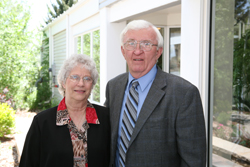
“I always admired Bob’s dedication and tenacity as a water engineer. He had an enduring passion as an educator and always believed in advancing the best of science and engineering. Above all Bob was a friend who will be dearly missed. Rest In Peace my friend.”
Dick Wolfe
Retired State Engineer (2007-2017)
Bob Longenbaugh‘s life work is deeply tied to the history of water research and education at Colorado State University. He graduated from CSU in 1957 and the same day he was commissioned as an officer in the U.S. Air Force as a meteorologist. Bob returned to CSU for an MS degree in soil and water management. He then became tenured as faculty in Civil Engineering where he received awards and recognition for his research on water issues, irrigation, and work with farmers and politicians across the state and nation. In 1981 he was hired as the Assistant State Water Engineer for the State of Colorado. Upon retiring, he remained active as a consultant and shared his knowledge of issues related to groundwater and its importance in agricultural life in Colorado.
Bob’s legacy is now part of the Water Oral Histories Collection at the CSU Morgan Library Water Resources Archive. He participated in an oral history interview, primarily in relation to his knowledge of and experience with groundwater issues in Colorado and neighboring High Plains states concerning the Ogallala Aquifer. He discussed groundwater wells, pumping, power, education, legislation, studies, artificial recharge, and other related topics. Read or listen to the interview to learn more about his unique water insights.
Bob is survived by his wife Eulalia (Lale), niece Diana, niece Stephanie, 5 stepchildren, he considered his own, and many grand and great-grandchildren. His legacy at CSU continues with the Robert A. Longenbaugh Scholarship in the CSU Department of Civil and Environmental Engineering.
Thank you, Bob, for your lasting contributions to protecting water resources in Colorado and throughout the region.
View the October issue of The
Kristen Cognac
Student Spotlight
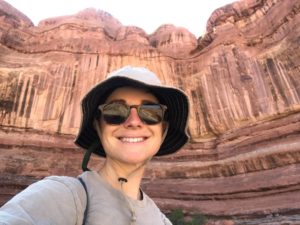
“A switch flipped” for Kristen Cognac, describing how she found her niche in hydrogeology. Initially, she started her studies in environmental engineering but found herself fascinated by groundwater. After her undergraduate studies, she worked as an environmental consultant where she benefited from diverse mentors and honed in on hydrogeology as her next educational endeavor.
Hydrogeology overlaps with many aspects of engineering and serves as a crossover for Cognac’s experience and skills. Her geology background gives her a distinct perspective, she says “it allows me to see things differently.” Her work in Colorado focuses on understanding groundwater supply and processes. Many municipalities in Northern Colorado almost entirely depend on the Denver Basin Aquifer and she is working to answer important questions such as how much water is available and how does long-term pumping affect access to water supplies.
When Cognac approaches groundwater modeling, her hydrogeology perspective prompts her to ask “how does the heterogeneity of the bedrock control the rates at which water flows down and recharges an aquifer.” While a groundwater model might assume that each layer of bedrock is continuous and consistent, her research findings show that is not always accurate. Within a single zone, there is a mixture of rock types, and those differences influence how water flows. She describes the depositional environments that are critical to modeling flow, “a sandy stream connects to a floodplain with clay soils, and then millions of years in the future, that stream and floodplain turn into the rock of the aquifer that we pump our water from,” the sand, clay, and silt that were originally there affect how water moves through a rock or an aquifer.
Another aspect of Cognac’s research is understanding how large changes in temperature impact streamflow by using an extensive network of monitors. “The groundwater system is a continuation of the surface water system and they are dynamically connected in many places,” she says. As climate change increases the likelihood of extreme temperature fluctuations, it is not yet clear how changes in the volume and timing of streamflow will alter rates of recharge to groundwater aquifers.
Cognac was recently awarded a scholarship from the Colorado Groundwater Association for her graduate research. Reflecting on this accomplishment she says, “knowing that people think our small piece of research is an important and interesting part of the story is pretty cool.” She plans to pursue an applied career with the USGS or as a consultant. Cognac also invites more women to join her in the field of hydrogeology.
Dr. Tony Cheng
Staff Spotlight
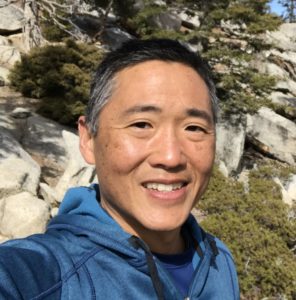
Conflicts around forest land management have been at the center of Dr. Tony Cheng’s career. Early on he recognized the benefit of avoiding lengthy legal battles using collaboration as a primary method of solving natural resource disputes. He observed the success of Oregon’s voluntary multi-stakeholder approaches to conservation which also yielded social and economic benefits to rural communities. The solutions were developed through alliances between people who were physically linked through a shared place rather than relationships entirely dependent on legal delineations.
Dr. Cheng worked toward understanding how impacted communities can come up with grassroot solutions that are situated within an individual watershed. He describes the reasoning behind the approach “each watershed is unique in terms of land use history, stakeholders, and water users.” Work brought him to Colorado where he immediately confronted mind-boggling impacts of large severe fires.
“Fire doesn’t care about jurisdictional boundaries,” says Dr. Cheng. Addressing the immediate task at hand of fire and risk mitigation in mixed-ownership geographies required new ways to organize politically and socially around firesheds. Working collaboratively with diverse colleagues and stakeholders within a fireshed, he notes “how the powerful nexus between fire and water is as a way to raise awareness and attention to this issue and how intuitive it is.” He attributes the cooperative relationships in this space to the motivation that fire and water create.
The fires we are experiencing across the West today may not be informed by the knowledge and methods of study we currently have. These stakeholder groups work in their own firesheds, but “climate change is a global phenomenon and passes our geological boundaries.” The learning we have left to accomplish is daunting, but Dr. Cheng is optimistic “this intersection of fire and water is a real opportunity to elevate the conversation of climate change.”
Dr. Cheng is encouraged to find solutions because of the community at CSU and being a land- grant university, saying that “collaboration and cooperation are built into the DNA of the institute; we have the pieces to make the science immediately useful and relevant.”
View the September issue of The Current.
Tomas Pickering
Student Spotlight
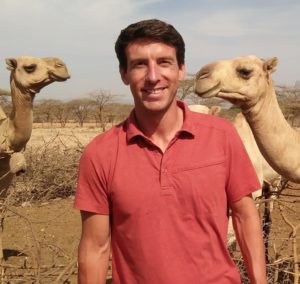
As fires rage throughout the western U.S., drought is on the forefront of our minds. Across the world, drought can be understood very differently. Tomas Pickering has spent the last four years considering drought through the pastoral perspectives of the Samburu people in northern Kenya. He discusses that for this pastoralist group “drought means different things on the ground.”
For many centuries the Samburu coped with drought by moving livestock into highlands. Influences of colonialization created unexpected impacts. As people settled down for access to social services, they became vulnerable to local drought. Pickering has sought to understand how the Samburu have adapted to limit the most devastating impacts of drought. He reflects on his research findings describing his surprise of “how intentional the switch to formalized education was as a response to drought.” Other adaptive actions include a diversification of livestock from only cattle to sheep and goats, which were easier to keep in one location. Women also changed their role becoming involved with herding and grazing decisions and starting small businesses to help support the family.
Often scientists and policy-makers define drought based on specific measurements, but Pickering has found that the Samburu have their own way of talking about drought. He says, “I was very surprised how nuanced and how practically and operationally useful their terminology was developed to talk about drought and lack of rainfall.” The words they used are “based on practical things people will experience” reflecting more than just a lack of rain, but complex social and ecological reasons for drought and livestock death.
Pickering has also been comparing the community perspectives of historic droughts to remote sensing analysis of the greenness of vegetation over 30 years. While the science pinpoints the timing of the most severe droughts the people may have only recorded it as a dry period. In contrast, some of the worst droughts to the community were not identified as such through remote sensing. Droughts that coincided with large cattle-deaths or community violence were discussed as more severe. This real-world comparison reveals the impact of social factors such as aid availability or adaptive planning. Pickering suggests that “who defines drought and the way you define drought will dictate decisions around it. It might change how you provide aid or relief efforts.”
Pickering plans to continue working in the critical nexus of conservation, grazing, and livelihoods during drought and other climatic events. His long-term goal includes working with conservation organizations to assist with community-based rangeland management practices.
Dr. Michael Ronayne
Staff Spotlight
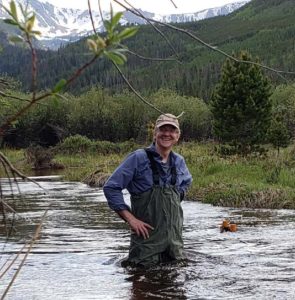
Exposure to water quality issues of Lake Erie in his youth taught Dr. Michael Ronayne the importance of clean water. In his undergraduate education, he was inspired by his geology professor and pursued a career as a hydrogeologist. Now working in Colorado his research is breaching the frontier of mountain watershed hydrogeology.
Dr. Ronayne and his students study the Denver Basin Aquifer System (DBAS) to understand the groundwater resources we rely on in northern Colorado. While some previous studies have indicated negligible amounts of water recharging the DBAS today, Dr. Ronayne’s research highlights two important inputs for the aquifer system. The water in the DBAS is constantly receiving recharge; groundwater contributions from the mountain block and surface water from streams seeps down through openings in the underlying sediment and enters the aquifer. This modern-day recharge of aquifers sustains an important water supply for future use.
Currently, we are pumping out water from aquifers much faster than it can be recharged. Dr. Ronayne studies the rate at which streams lose water, where streams are seeping, and the rate at which aquifers are recharged. He says while “pumping exceeds recharge, it’s still important to quantify the natural rates of recharge to manage the aquifer moving forward.” Knowing where the geology is suitable for recharging the aquifer identifies candidate sites for a managed recharge project; when there is excess surface water it can potentially be recharged or injected into depleted aquifers.
In his research of the DBAS, Dr. Ronayne was prompted with the question of the role of groundwater in mountain regions. In the mountains, snowmelt turns into groundwater and eventually interacts with surface water as streamflow. He seeks to understand the hydrological significance of groundwater in mountain watersheds, the interactions between groundwater and mountain streams, and the importance of mountain-front recharge to basin aquifers like the DBAS.
Little is known about groundwater in mountainous regions, partly because it is hard to get at. Fortunately, with grants from the Colorado Water Center and the Warner College of Natural Resources, Dr. Ronayne and collaborators were supplied with funds to drill 40-ft deep wells at the CSU Mountain Campus. He describes this as an “amazing opportunity to drill into the valley sediments and investigate groundwater at more than 9,000 ft above sea level.”
Click here to view the August issue of The Current.
Matthew Lurtz
Student Spotlight
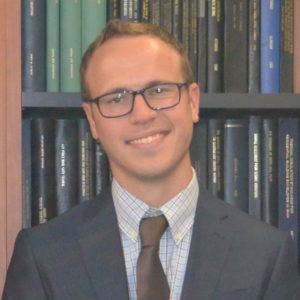
Growing up with math-inclined parents, Matthew Lurtz’s journey toward his current role seems natural. Now, reflecting on it he says “I never realized how much of my work would revolve around statistics and computer programming and how much I would enjoy it.” His love of learning and being on the cutting edge of science and math drives his research and academic career goals.
An interest in studying riparian vegetation, the plants growing along the banks of waterways, was sparked for Lurtz by the late Dr. Jorge Ramirez. The personal passion emanating from Dr. Ramirez was contagious and Lurtz recalls his experience in the Quantitative Ecohydrology class, “I felt truly blessed.” The style of the course was that of a thought class, encouraging Lurtz to connect with the real-world value behind the maze of equations supporting engineering research.
Lurtz studies the interactions between riparian ecology and hydrology in Dr. Ryan Morrison’s research group and published an article on his research earlier this year. He works to quantify how groundwater return flow impacts water use of riparian ecosystems in southeastern Colorado. Inefficient irrigation practices can change the quantity and timing of groundwater return flow. Over time, groundwater returns to the surface as a river or stream where it interacts with riparian vegetation. Lurtz uses remote sensing, site monitoring, and Bayesian statistics to analyze the hydrologic connections between irrigation return flow and riparian ecosystems.
The purpose behind Lurtz’s research is to better understand the connections between an agroecosystem and a natural system. Discussing this connection, he says “everything we do has an impact. Energy used somewhere goes somewhere else.” By the mid-20th century, much of southeastern Colorado was confronted with effects of inefficient irrigation, as increasingly saline, salty soil made farming land infertile. As a result, a large percentage of the population were forced to sell their water rights. The agriculture-based economy of this area has never recovered. Lurtz hopes that his work can influence better conjunctive management of groundwater and surface water to create more fertile land over time and alleviate poverty.
Upon his graduation, planned for this summer, Lurtz will work as a post-doc and continue on to an academic career.
Dr. Patrick Keys
Staff Spotlight
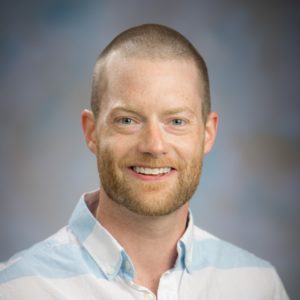
Traveling to Morocco and interviewing agricultural water users as an undergraduate student gave Dr. Patrick Keys his first indication that water would be a focus throughout his career. He discusses his water research “in the context of water as a profound necessity.”
Most people think of freshwater flowing in rivers or through our faucets, but there is a vertical flow of water that is not well understood. Throughout his career, Dr. Keys explored the importance of rainfed systems that don’t generate surface runoff. When it rains in these systems, which account for a large fraction of the world’s land surface, water either reevaporates or is absorbed by plants and transpired to flow back down as precipitation. Much agricultural land is dependent on rain and the location of rainfed farms and growing season functions on finely tuned planning. As the climate changes, rainfed agricultural systems face water insecurity which leads to food insecurity.
Dr. Keys explored this question of atmospheric water cycling in his Colorado Water Center Research Team Grant “Who changes the rain?”. This gave him a critical launchpad for his research career at CSU. From this project, he secured a $744,000 grant from NASA expanding his work regionally and is now planning globally. His research seeks to use a new understanding of atmospheric water cycles to answer questions around the UN Sustainable Development Goal 15 addressing the protection of forests and combating land degradation.
Education is an important aspect of maintaining optimism when Dr. Keys faces these global water challenges. One method he uses to engage students and has plans to explore further is the use of science fiction. For his course on sea-level rise, he asks “students to develop their own speculative future.” Science fiction builds out worlds connected to our own, and traditional science planning doesn’t do this well. This assignment offers undergraduate students a rare chance for creative writing, encouraging them to use the science they learned in the course and apply it to future scenarios.
Rather than get bogged down by the immense scale and complexity of climate change, Dr. Keys takes a unique perspective. He turns it around by saying we need to “engage the complexity.” He believes “It is empowering to know about this and have the tools to understand… If we have more doors that allow us to see the complexity in new ways it will allow us to develop different types of solutions.”
Click here to view the July issue of The Current.
Marcee Meinhardt
Student Spotlight
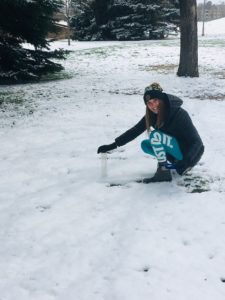
Shortly after Marcee Meinhardt transferred to CSU she set her ambitions for her education and career. The CSU academic community introduced her to unique intellectual opportunities, and she was excited to be in an atmosphere created by professors who are passionate about their students and their subject. She fell in love with fish and riparian habitats in her required ichthyology class, discovering a newfound passion of freshwater as a resource. She further honed in on freshwater resources working with Dr. Steven Fassnacht, Professor in the Department of Ecosystem Science and Sustainability and a 2019 CoWC Education and Engagement grantee, whose research focuses on snow and water availability.
Dr. Fassnacht challenged Marcee to analyze historic daily snow data beginning in 1889. Initially apprehensive of the daunting task of analyzing 50,000 observations, she now feels proud of her work and the quantitative skills she gained, “I am the master of Excel” she says. Marcee presented her findings at the 2020 Hydrology Days webinar and published the article, Fresh Snow Density from the Fort Collins Colorado Meteorological Station and New Measurements, a corresponding special issue of Colorado Water. Recalling the experience, she was grateful to be part of this impressive event and share her work on water availability in snow.
Marcee’s goals are all about water. She expects to return to academia for a graduate degree in the future, but first she is looking to gain hands-on experience collecting field observations and working with data. “Water is the essential resource that anything living needs” she recounts and explains the entire Western Region depends on Colorado as a headwaters state. The environment uses snow as its savings account so we need to figure out how much water will be accessible as climate change impacts freshwater availability. Hoping for a wetter future, Marcee signs off saying “Let it snow.”
Amy Kremen
Staff Spotlight
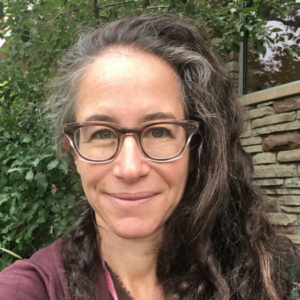
Changes in life happen through connections. For Amy Kremen, it was her connection to farming and colleagues that brought her to her current position bridging the science of resource conservation with practical solutions for producers.
Kremen, originally from Maryland, thought about water in a starkly different way to her western water perspective. Her love of farmer’s markets and background in soil science drew her into the farming community. In her experience running a farm-to-table restaurant then becoming a farm apprentice and working as an organic farmer, she connected with Dr. Meagan Schipanski, 2016 CoWC Water Fellow. Their paths crossed several times throughout their careers studying cover crops in Maryland, soil science in New York, research in Africa, and work in Montreal.
Faced with a big change of moving from Canada to Colorado, Kremen reached out to her network. Once again, she connected with Dr. Schipanski, who had recently been awarded a $10 million grant from USDA’s National Institute of Food and Agriculture. Kremen applied for the position of project manager for the Ogallala Water Coordinated Agriculture Project (OWCAP), and she accepted the opportunity to work on water with a diverse group of researchers and have a national impact.
As a result of the 2018 Ogallala Aquifer Summit, an initiative led by OWCAP in partnership with the Kansas Water Office, a program called Master Irrigator was developed for farmers in Texas and then replicated and launched in February 2020 to serve producers farming in northeastern Colorado. The Master Irrigator program is focused on changing water management in productive and profitable ways. Kremen describes a key approach of the Ogallala Water team that has been to “create forums that bring people together to talk about the hard water-related challenges the region is facing.”
Working on the OWCAP and Master Irrigator program, Kremen has been surprised by how willing people are to work on and talk about sticky and challenging issues related to water. Ogallala region producers she’s connected with over the past 4 years, demonstrate a lot of passion and motivation to learn from others’ experiences working with water and figuring out how they can operate more efficiently and profitably.
One of the producer participants reported in their evaluation “[The program] really made me realize with little time and money I can probably improve irrigation applications that will increase efficiency and make it easier to conserve.” Kremen is now helping lead a multi-state group that is working on replicating the Master Irrigator in other areas; a new Master Irrigator program in Oklahoma, led by a former post-doc supported by OWCAP, is slated to launch later this year. “With lots of groups- producers, groundwater management districts, local and regional groups, and others all pulling in the same direction, I am optimistic” that the region can make critical shifts needed to conserve more water, Kremen says.
Click here to view the May issue of The Current.
Elaina Passero
Student Spotlight
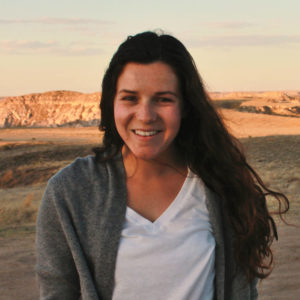
Elaina Passero started on her path to water research at a young age. Homeschooled by her science teacher mother, many of their lessons brought them outside at their home in North Carolina. Exploring her academic interests, she studied biological systems engineering at Virginia Tech where she conducted research for the state of Virginia developing models to predict declines in species richness and changes in streamflow. Through her environmental research of the Appalachia region, she reflected “I gained an appreciation for the biodiversity hotspot that I grew up in.”
This perspective motivated Elaina to continue with her education. Everything came together for her at CSU, “This was my dream thesis project.” She was hired to develop a decision support system (DSS) for the US Forest Service and US Geological Survey. The final goal of the project is to build a web-based application to help decision-makers accurately plan for changes to flow in diverse rivers around the country.
Elaina’s master’s thesis is the pilot project demonstrating the functionality of the DSS tool on the Verde River. She presented her research at the 2020 Hydrology Days webinar on April 14. The purpose of her work is to determine the amount of water needed to keep the Verde River a federally designated Wild and Scenic River. The DSS model quantifies harm in terms of habitat availability to determine at what point changes in flow harm the ecosystem.
The real challenge in creating this tool was how to code for her pilot area and make the code flexible to account for differences between sites. Future users of the application would alter parameters such as the number of species and type of climate in the study river, and differing flow scenarios. For example, the Verde River’s flow is snowmelt driven and follows a monsoonal pattern, while other rivers will have unique sources and seasons. As new water management plans are proposed, the DSS provides users the means to evaluate flow scenarios and impacts on endangered species.
Throughout this project, Elaina realized “how constrained your options are for improving flow to meet environmental needs.” Having accurate models and DSS tools is critical for river conservation. With her graduation around the corner, she hopes to gain employment developing tools for decision-makers for stream restoration projects. “I really enjoy applied research because I feel like I can make a difference.”
Dr. Ryan Morrison
Staff Spotlight
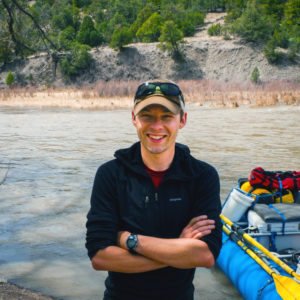
An inspiring fluid mechanics professor sparked the journey into water research for Dr. Ryan Morrison. As an undergraduate student at Washington State University, he studied ecological impacts of shallow river turbulence. After completing his master’s degree at WSU he worked as a consultant where he found opportunity for creativity lacking. Ambition for innovation and the ability to work across disciplines drew Morrison back to academia.
Achieving his collaborative goals, Morrison partnered with CSU researchers from diverse disciplines on a CoWC Water Research Team grant in 2018. The team applied their expertise in new areas to investigate how flooding impacts people of different demographics by matching census data with floodplain protections and emergency response protocols for spatial correlation analysis.
Results of this team’s research surprised Morrison and provoked additional questions. While the EPA provides socio-enviro-health indices on water and outdoor air quality, there are very few resources on health impacts due to natural hazards like flooding in different communities. For example, after a flood, indoor air quality can cause health risks which may be overlooked depending on economic factors. Now understanding how hydrology and human health are tied together, he is exploring how to develop an index to assess large scale vulnerability to flooding.
Morrison also studies ecohydrology of interactions between rivers and floodplains. He recently published an article, Quantitative assessment of floodplain functionality using an index of integrity, in the journal of Ecological Indicators and will continue work on this subject as a CoWC Water Fellow in 2020-2021.
Click here to view the April 2020 issue of The Current.
Kelsea MacIlroy
Student Spotlight
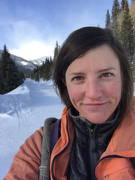
Water conservation emerges from the choices people make. Kelsea MacIlroy’s connection to water developed through her passion, “sociology is a way to explore pretty much anything in the world.” Becoming interested in rural sociology as an Americorp volunteer, she worked at a homeless shelter in Alamosa, where she met her husband who volunteered alongside her. She ran a gleaning project, collecting and donating leftover crops to local food banks, forming her first partnership with farmers.
MacIlroy focused her graduate research on agricultural water conservation in the Colorado River Basin, a project funded by USDA-NIFA through the Colorado Water Center (crbagwater.colostate.edu). Her study involved extensive interviews with farmers and ranchers to better understand the barriers to conserving agricultural water in the region and identifying opportunities for multi-stakeholder collaboration.
As a qualitative researcher she discovered “how deeply people care about the resources they use and the land they grow things on … and the livelihood they are able to create through that process.” Acknowledging the reality of what people sacrifice to make projects work, there is no win-win solution when reallocating resources in a basin that is already strapped for water.
Bringing social and cultural perspectives together, MacIlroy’s insightful report Exploring perceptions of a voluntary agricultural water conservation program on the western slope of Colorado was published in October 2019 through The Nature Conservancy and is available online. This report along with several other publications aim to inform discussions with the Colorado Water Conservation Board. Water management is a complex social process at the intersection of historical, political, economic, structural, and emotional ties.
As a PhD candidate, MacIlroy is continuing water research in Colorado. She served as a guest editor for the Spring 2020 issue of Headwaters Magazine on Environmental Justice, published by Water Education Colorado. MacIlroy also teaches an online course at CSU, Soc 105: Social Problems, that students can register for and take this summer.
Honoring Dr. Jorge A. Ramirez
Staff Spotlight
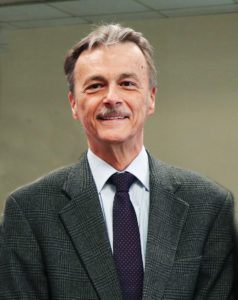
“Jorge Ramirez, Professor of Civil and Environmental Engineering at CSU, passed away on Saturday, March 28, 2020. Losing Jorge created big holes in our hydrology and water resources capabilities and in our hearts. Jorge was a world leader in hydrologic analysis and eco-hydrology.” – Neil Grigg, colleague and Professor in the Civil and Environmental Engineering Department
As a founding member, Jorge Ramirez served on the CSU Faculty Executive Committee for the Colorado Water Center from 2013-2019 providing keen judgment for the Center’s activities and its Competitive Grant Program. Among his significant contributions at CSU, Jorge chaired the AGU Hydrology Days conference from 2000-2018. He was honored with the George T. Abell Outstanding Mid-Career Faculty Award in 2005 and the Oliver P. Pennock Distinguished Service Award in 2018. As an advocate of interdisciplinary research and education, Jorge developed curriculum and was named Professor of the Year in 2012 by the CSU University Honors Program. “His courses were demanding and forward-looking, and his research was cutting-edge, often focused primarily on student needs” recalls Neil.
Jorge served on the science and technology committee panels for the National Science Foundation. Internationally recognized, he consulted for the United Nations in India, advised in Korea and Columbia, and held positions at institutions in Switzerland and Italy.
Dr. Jorge Ramirez is survived by his wife Gloria and three sons. A service is not scheduled at this time, though you can share your memories here.
Thank you, Jorge, for your many contributions to CSU, the Colorado Water Center, and to our water community.
Click here to view the March 2020 issue of The Current.
Click here to view the February 2020 issue of The Current.
Rachel Jones
Student Spotlight
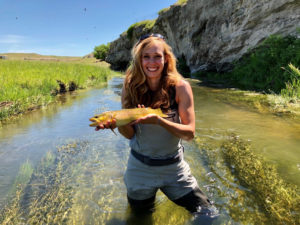
A graduate of the School in the Woods, Rachel Jones followed her dream to work with wildlife. This program immerses fourth-graders in nature and taught Rachel about possible professions including wildlife rehabilitation. Throughout her education and career, she has refined her specialties to achieve her goals.
In her undergraduate studies, Rachel enjoyed her experience tagging 3-5-foot lemon sharks in the waters around Turks and Caicos. When she found her work as a marine biologist pushing her toward employment with for-profit fisheries she quickly pivoted to focus on native ecological systems.
Rachel established herself on the path to reach her career ambitions working for Colorado Parks and Wildlife, back home in the Arkansas River Basin.
Survey work encompassed the majority of Rachel’s days. Her responsibilities contributed to keep an eye on populations, discover problems and solutions, and coordinate with state water boards. One such survey job took her on a 4-day rafting trip down the Dolores River. Rare and perfect water levels allowed them to travel the length of the river through the canyon to collect and monitor native Flannelmouth and Blue Head Suckers. These fish can live to be 25 years old and are impacted by diversions. To survey these fish, a team of 10 scientists and technicians used the method of electrofishing, which temporarily stuns fish so they can be collected, measured, tagged, and returned safely to the water.
This experience gave Rachel practical skills doing fieldwork with wildlife. When she heard about a funded project to work on fish passages, she applied and was accepted to work under Dr. Chris Myrick with CSU’s Department of Fish, Wildlife and Conservation Biology. In this position, they work to identify how well fish passages perform. All fish need to travel through their entire habitat “connectivity is really important.” Rachel’s Master’s thesis has contributed to tagging more than 600 fish in Longmont to identify what works and what needs to be improved in fish passage structures.
Professor Chris Myrick
Staff Spotlight
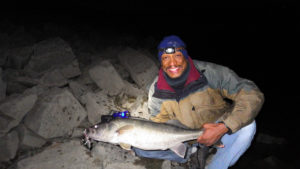
As a child Dr. Chris Myrick moved around the world with his diplomat father, living in Mexico, Zaire, Paris, and many other countries, but Panama sparked his love of fishing. Every weekend they debated whether to fish in the Atlantic, Pacific or a freshwater lake or river. In Australia, where he finished high school, fishing became an obsession. From there, his path to becoming a fish physiological ecologist and professor was natural, driven by his love of research and teaching about fish. Reflecting on his goals and achievements he comes back to this personal penchant, “I can’t believe I get to come to work and talk about fish.”
Paying it forward, Dr. Myrick is proud of the culture of his research group at CSU. Every day he strives to give his students the same opportunities he had to find and achieve their professional ambitions. Under his direction, graduate students guide undergrads in conducting field research, giving both practical career experience. Recognizing Dr. Myrick’s dedication to his students, the American Fisheries Society presented him with the “Outstanding Mentor” award.
While it is well known that large fish like salmon migrate, rarely have water managers factored in migration of small fish. Structures for salmon don’t help fish smaller than a cell phone travel.
These “small brown fish” could travel from the Front Range to Nebraska and back before diversions were there. Now there is no mass migration. Dr. Myrick’s work applies research to develop fish passages used by government agencies, completing 6 projects over the past 20 years. His goal is to design low-cost modular units to install along the South Platte River and ultimately restore connectivity from Nebraska to Denver.
Dr. Myrick serves as the president of the American Fisheries Society. Later this year he will pass the baton and name a new president at the International Congress on Biology of Fish held in France.
Click here to view the January 2020 issue of The Current.
Abby Eurich and Tony Vorster
Student Spotlight
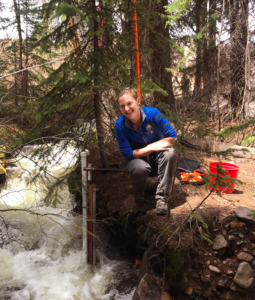
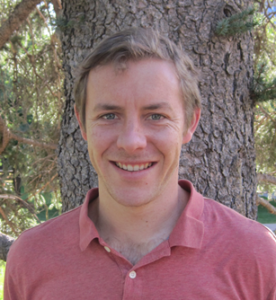
Difficult problems with murky solutions became clear through collaboration. Abby and Tony were connected when they asked the same question: how does forest disturbance like fire and beetle kill impact water quantity? Abby initially approached this by using stream gage data but found she needed maps to make the necessary correlations. Meanwhile, Tony had developed detailed bark beetle and fire disturbance maps using remote sensing, providing wall to wall snapshots over years of changes.
Abby and Tony collaborated through funding from CoWC awarded to Dr. Evangelista in the Department of Ecosystem Science and Sustainability. Their findings indicate that while wildfires are likely to result in greater water quantity, streamflow change in areas with beetle disturbance is highly dependent on the severity of beetle kill and nuances of heterogeneous landscapes and watersheds. Both agree that having resources devoted to bringing two disciplines together to solve a tough problem was exciting and yielded better answers helping water managers build more accurate water budgets. They taught each other their field’s jargon and the joint project allowed them to visualize the whole workflow in detail.
Abby is from Denver originally. She studied geology at Yale, conducted fieldwork and consulting in Oregon and Colorado before attending CSU for her Master’s degree. She was drawn to water resource studies because it has a “really cool mix of environmental sciences, geology, and delivering this important resource to people.” Abby graduates from CSU in the Spring of 2020 and hopes to stay in Colorado and be part of a team that works to foresee future water resource challenges and mitigate them across the state.
Hailing from California, Tony completed his Bachelor’s at UCLA in biology. He moved to Colorado Springs where he taught 3rd grade for several years. He now mentors students and young professionals in NASA’s DEVELOP program to build GIS and remote sensing capabilities and science communication skills. Upon his graduation, also in spring 2020, he will continue working for Dr. Evangelista on remote sensing and ecology. The question that drives him now and through the future asks, how can remote sensing improve understanding of ecological processes to inform land management?
Professor Paul Evangelista
Staff Spotlight

Passion and career were found in the desert of Utah for Dr. Paul Evangelista. Moving from the temperate forests of Virginia to the arid west, he conducted vegetation inventory in the Grand Staircase-Escalante National Monument. Spending months at a time outside, the desert became part of him as he explored remote regions by helicopter and horseback. Invasive species link his work here and in Ethiopia and Somalia, where shrubs like Tamarisk change the landscape threatening water resources and livelihoods. Dr. Evangelista is revisiting environmental challenges with new sampling methods and improved satellite mapping.
Drawn to the applied coursework as a student and now as a research scientist and graduate student advisor, Dr. Evangelista found his home at CSU for the past 25 years. He also sits on the board of NASA’s DEVELOP internship program doing hands-on work with undergraduate and master’s students. Dr. Evangelista enjoys providing experiential learning for students and the community. The CoWC grant he received allowed him to fund a collaborative project with two graduate students also featured in the Spotlight.
Click here to view the December 2019 issue of The Current.
Ansley “A.J.” Brown
Student Spotlight
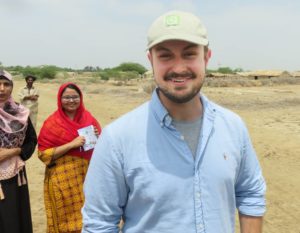
Growing up on a farm in Rocky Ford, Colorado, A.J. is no stranger to the constraints water scarcity puts on the profitability of agriculture. As he describes his path from farmer to researcher, in each stage of his career he “saw a problem and tackled it.”
Data collection for the CSU Agricultural Experiment Station at the Arkansas Valley Research Station gave A.J. his first experience as a scientist. Maintaining and recording results from the Lysimeter project measuring how plants use water, he met his mentor Dr. Allan Andales, who played an inspirational role in A.J.’s education and is now his academic advisor. A.J.’s graduate research confronted a major challenge, which, unknown to him at the time, sparked his career.
Again, visiting the Arkansas Valley, A.J. picked up data he had collected from field sensors for months. Unluckily, he discovered that some of his sensors had not been collecting data. What could have been discouraging for some, pushed him to solve the problem in an ingenious and economic way. While the sensor manufacturers provided a solution, it was not attainable with his limited project budget. Looking to the community he found the base of coding which he augmented and enhanced to fit his needs. Not only was the initial issue solved, but now the data is automatically loaded into a cloud-based, user-friendly dashboard.
Making water conservation research applicable to a wider audience is a personal and professional goal of A.J.’s. His current work for USAID addresses the difficult task of making advances in soil salinity measurement and management used here, available to developing countries, particularly in Pakistan. In many places around the world, there is no access to expensive drip irrigation and center pivots that require extensive infrastructure.
Others noticed A.J.’s creative problem solving and global perspective. The Irrigation Innovation Consortium (IIC) is a collaborative research effort to accelerate the development and adoption of water and energy efficient irrigation technologies and practices through public-private partnerships. The IIC was being developed as A.J. finished his final courses and he was invited to join the leadership team. A piece of the mission of the IIC is to fill the “gap space” by bringing researchers together with industry partners. The work of the IIC fit A.J.’s background, expertise, and goals perfectly. While there is a lot of promising tech around irrigation, standards are confusing and not always accessible to real people and producers. That is where A.J. efforts makea difference.
Professor Melinda Laituri
Staff Spotlight
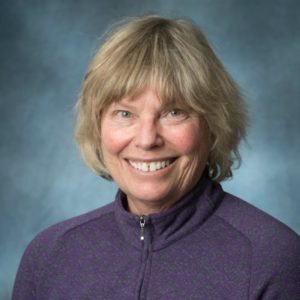
Water is everywhere and is the link between everyone. While we all need water, each person who uses water has a different relationship with it. Professor Melinda Laituri characterizes this as the hydro-social cycle. Her time as a CoWC Fellow gave her the rare opportunity to take a step back from the gritty details of water management to look at the bigger picture of people and water.
How we react to water in our society and culture defines it beyond just rivers or rain. Farmers may see the immediate economic value, indigenous peoples may have connections to scared plants growing on the riverbanks, some may harvest water directly from a lake to drink, while others have the luxury of turning on a faucet. Each of these people have a unique connection to water. This is what drives Dr. Laituri’s research.
“Water is really my passion.” Dr. Laituri grew up in California, where water was common household discussion as her father worked on water management projects. She spent much of her career understanding and teaching others how to use water data to plan for the future. Dr. Laituri benefits from the wide perspectives on water she has encountered working with indigenous peoples in the US, New Zealand, Ethiopia, and many other countries.
Secondary Cities are places with rapidly expanding populations and under-mapped resources and infrastructure. Studying the urban waterscape reveals the less glamorous side of water, tours of wastewater treatment facilities show Dr. Laituri how water resources are really managed. She is keenly aware of the impact of access to water and sanitation.
When visiting universities in developing countries, she always asks to use the student bathroom. While the staff bathrooms are locked and stocked with toilet paper and soap, such essentials are rare for student facilities. This lack of safe access to sanitation leads to a high dropout rate among women. Improving water management is directly linked to social equity and economic growth.
As a headwaters state, Colorado is a microcosm of water issues around the world and what she learns here is widely applicable. Melinda Laituri will be speaking at the upcoming annual meeting of the American Association of Geographers conference in Denver.
Click here to view the November 2019 issue of The Current.
Haley Smith
Student Spotlight
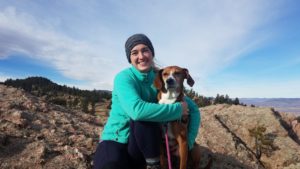
Haley is a current student in the Conservation Leadership Through Learning (CLTL) Master’s program in the Warner College of Natural Resources at CSU. Haley is originally from Asheville, North Carolina, where she grew up playing in creeks and streams and began doing water quality sampling at summer camp at the young age of 13. She received her undergraduate degrees in Biology and Environmental Studies from Washington and Lee University in Lexington, VA. As an undergraduate, she continued to pursue her interest in water issues by conducting research on water quality and its public health implications in southern Kenya while studying abroad with the School for Field Studies.
For her Capstone Project this past summer, Haley is partnered with the Big Thomson Watershed Coalition (BTWC) to help develop and pilot a Community Science and Stewardship Project. The vision of the project, as a part of BTWC’s larger adaptive management efforts, is to increase the organization’s capacity to monitor restoration sites along the river while engaging local community members to help care for their water resources.
Haley’s capstone project ran from June through September, during which time Haley worked with other local watershed initiatives as well as academic literature to design an adaptive volunteer monitoring program. She piloted the project with initial trainings and workdays where she gathered feedback from participants on how to improve the program going forward. She hopes this project will contribute to BTWC’s overall efforts by increasing community engagement and input towards fulfilling their vision for a resilient Big Thompson Watershed.
Professor Dennis Ojima
Staff Spotlight
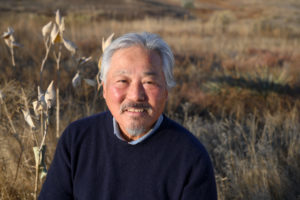
Driving impact is Professor Ojima’s legacy. Though retiring from the Department of Ecosystem Science and Sustainability, he continues to contribute to global environmental change as a senior research scientist for the Natural Resource Ecology Laboratory at CSU. Ojima’s 30 productive years in the field are not short in prestigious accolades. From participation in a Nobel Prize-winning team to a 20-year stint as an Aldo Leopold Leadership Fellow to serving on notable boards and contributing to major scientific research, his impact has been well recognized.
Moving forward Professor Ojima continues his work to inform decision making around challenges of sustainability in the anthropocene. In our current time period, humans have impacted every ecosystem, aquatic and terrestrial, fundamentally changing our world and life-giving water cycles. Mitigating negative consequences of past and ongoing management decisions takes work like Ojima’s to develop strategies to adapt here in Colorado, the US, and around the world.
Ryan Roberts
Student Spotlight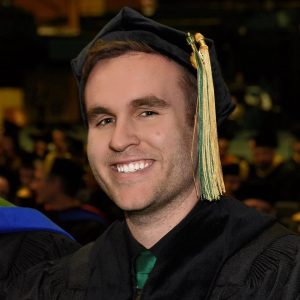 Ryan received his PhD in Human Dimensions of Natural Resources at CSU in May. His dissertation was focused on assessing the role of scientific evidence in the decision-making processes of collaborative watershed partnerships throughout the Intermountain West region. These watershed groups invest in wildfire mitigation treatments as a risk reduction strategy to avoid the negative impacts catastrophic wildfires can have on watersheds. Specifically, Ryan assessed how groups use scientific evidence to justify making investments and decide on specific wildfire treatments to employ, as well as what scientific information they relay back to their stakeholders and the public.
After graduating, Ryan briefly worked as a consultant for the National Park Service’s Climate Change Response Program. His project was focused on assessing the status of climate change interpretation across the National Park System. Ryan recently accepted a position with the U.S. Fish and Wildlife Service in Fort Collins as a conservation social scientist. Through this position, he will be leading a long-term visitor management program throughout the National Wildlife Refuge System. In the future, Ryan is specifically interested in conducting large-scale feasibility analyses or impact evaluations to assess the efficacy of conservation finance programs that invest in water and other natural resource conservation initiatives. If you would like to learn more about Ryan’s research and interests, please explore his LinkedIn page or email him at ryanmroberts616@gmail.com.
Ryan received his PhD in Human Dimensions of Natural Resources at CSU in May. His dissertation was focused on assessing the role of scientific evidence in the decision-making processes of collaborative watershed partnerships throughout the Intermountain West region. These watershed groups invest in wildfire mitigation treatments as a risk reduction strategy to avoid the negative impacts catastrophic wildfires can have on watersheds. Specifically, Ryan assessed how groups use scientific evidence to justify making investments and decide on specific wildfire treatments to employ, as well as what scientific information they relay back to their stakeholders and the public.
After graduating, Ryan briefly worked as a consultant for the National Park Service’s Climate Change Response Program. His project was focused on assessing the status of climate change interpretation across the National Park System. Ryan recently accepted a position with the U.S. Fish and Wildlife Service in Fort Collins as a conservation social scientist. Through this position, he will be leading a long-term visitor management program throughout the National Wildlife Refuge System. In the future, Ryan is specifically interested in conducting large-scale feasibility analyses or impact evaluations to assess the efficacy of conservation finance programs that invest in water and other natural resource conservation initiatives. If you would like to learn more about Ryan’s research and interests, please explore his LinkedIn page or email him at ryanmroberts616@gmail.com.
Aditi Bhaskar
Staff Spotlight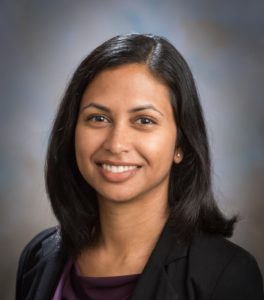 Aditi is an assistant professor in the department of Civil and Environmental Engineering. She moved to Fort Collins from Maryland, where she grew up crawling through storm sewer pipes. Today, her research focuses on hydrologic change from urban growth, which can be seen through shifting streamflow or flooding on city streets. Her past and present work has investigated how stormwater management and lawn irrigation change low flows in streams, and one of her current projects was recently awarded $25,000 through the Colorado Water Center’s annual competitive grant program.
The project, called Flood Tracker, collects reports of street flooding from the public. Aditi’s team is working to collect crowdsourced information because people driving, biking, walking, or bussing around town are right now our best monitors of flooding conditions on the street at that time and place. The time and place of street flooding will be used to improve predictions of urban flooding and target improvement efforts.
Aditi is an assistant professor in the department of Civil and Environmental Engineering. She moved to Fort Collins from Maryland, where she grew up crawling through storm sewer pipes. Today, her research focuses on hydrologic change from urban growth, which can be seen through shifting streamflow or flooding on city streets. Her past and present work has investigated how stormwater management and lawn irrigation change low flows in streams, and one of her current projects was recently awarded $25,000 through the Colorado Water Center’s annual competitive grant program.
The project, called Flood Tracker, collects reports of street flooding from the public. Aditi’s team is working to collect crowdsourced information because people driving, biking, walking, or bussing around town are right now our best monitors of flooding conditions on the street at that time and place. The time and place of street flooding will be used to improve predictions of urban flooding and target improvement efforts.Click here to view the June 2019 issue of The Current.
Dominque Ashe
Student Spotlight
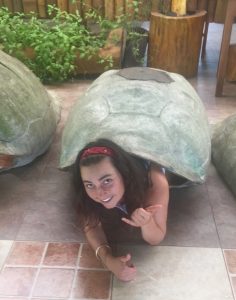
Dominique is a San Francisco-born nature lover who came to CSU for its environmental programs. As a Human Dimensions of Natural Resources major, she began her water journey with a graduate level course taught by CoWC Director Reagan Waskom her sophomore year, which furthered her desire to engage in water management.
She promptly added the SWIM minor to her portfolio, delving into the world and professions of its sustainable uses. For her senior project, Dominique worked with the local Peaks to People Water Fund to highlight their collaborative public engagement efforts across Fort Collins’ companies, community members, and resource agencies. Dominique graduated in May and hopes to attend graduate school in public administration or environmental law in the next few years. Until then, she continues gaining experience in water management and sustainability consulting around the Front Range.
MaryLou Smith
Staff Spotlight
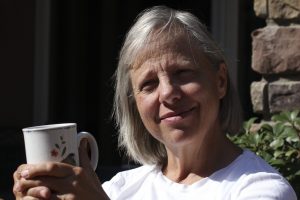
After 10 years of exceptional service to the CoWC and the Colorado water community, MaryLou is retiring from CSU on June 30. MaryLou has served as a policy and collaboration specialist, designing and facilitating group processes for stakeholders working through complex water policy issues throughout Colorado and the West.
Her efforts include the formation and leadership of the Poudre Runs Through It Study/Action Work Group (PRTI) and Water Literate Leaders of Northern Colorado. Much of her work has centered on agricultural/urban/environmental water sharing strategies, groundwater/surface water conjunctive use challenges, and the integration of land use policy with water supply policy. To plant a seed to increase the ethnic diversity of voices in Colorado water policy decision making, MaryLou launched CSU Water Sustainability Fellows in which CSU students of color learn about water issues and share that information with similar students in North Denver communities through a National West Center Youth Water Project. MaryLou previously served 35 years as the vice president and co-founder of Aqua Engineering, Inc., an irrigation engineering firm with projects worldwide. MaryLou grew up on a cotton and alfalfa farm irrigated with groundwater in eastern New Mexico. She earned a master’s degree in educational psychology from New Mexico State University. She also served twelve years on the City of Fort Collins Water Board and has given presentations on her work in places as diverse as Tehran, Iran; Fortaleza, Brazil; and Wray, Colorado.
Click here to view the May 2019 issue of The Current.
Alyssa Anenberg
Student Spotlight
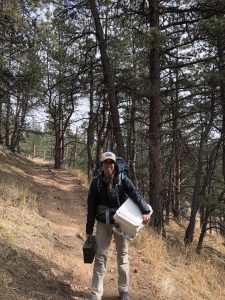
Alyssa is a Master’s candidate in Watershed Science in the Department of Ecosystem Science and Sustainability at CSU. Prior to her graduate studies, she received her bachelor’s degree in Environmental Sciences with a minor in Sustainability from California State University, Chico. Her current research—which was recently awarded at Hydrology Days—focuses on linking snow persistence and biogeochemistry in mountain regions and understanding the associated impacts of climate change on catchment hydrology.
Alyssa is currently working on a project to determine how climate warming directly affects snowpack dynamics in the western United States, and how it results in decreased snow cover and earlier snowmelt. The goal of her research is to understand how the duration of snow persistence affects soil moisture across an elevation gradient and how this gradient in snowpack affects soil water nitrogen. She is working at three research sites in the Colorado Front Range to monitor snow, soil moisture, and soil water nitrogen. Her hope is that this research will increase our understanding of how changes in the duration and quantity of snowpack affect the supply of soil water nitrogen in these mountain regions.
Cary Weiner
Staff Spotlight
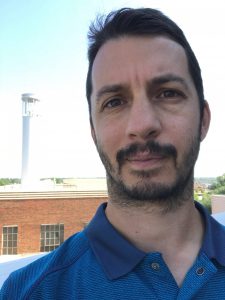
Cary Weiner is the State Energy Specialist for Colorado State University Extension and Director of CSU’s Rural Energy Center. He works with Extension agents and other partners across the state to determine and meet educational needs related to sustainable energy. His work includes making public presentations on home energy, farm energy, and electric vehicles; conducting community energy assessments; hosting a Local Government Energy Academy; developing web content and online decision tools for sustainable energy; and conducting economic feasibility assessments for on-farm solar.
In a recent USDA-sponsored project called Farm Assessments for Solar Energy (FASE), Cary and his team conducted 60 economic feasibility assessments for irrigated farms, feedlots, and other agricultural operations in Colorado—many of which are rely on water. One participant has installed a solar array to reduce energy use for pumping water, while other participants are now applying for grants to do the same. With the cost of solar dropping significantly in recent years, a federal tax credit for solar, and federal and state grants for on-farm renewable energy projects, the project aimed to give agricultural producers an estimate of their returns on investment from solar. Cary is driven to identify opportunities like these where local economic benefits could be gained while reducing climate impacts. Learn more about Cary and his efforts at ruralenergy.colostate.edu, and visit CSU Extension’s Your Energy Colorado website for more information about sustainable energy in Colorado.
Click here to view the April 2019 issue of The Current.
Hannah Harrison
Student Spotlight
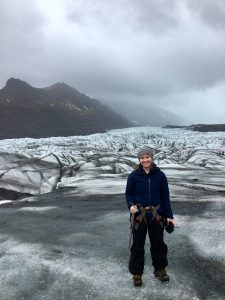 <
<
A senior at CSU, Hannah studies Ecosystem Science and Sustainability and is a SWIM student. She comes from Bainbridge Island, WA, which fostered her deep appreciation for both the happiness- and life-giving properties of water. Living in a place surrounded by water impressed on her just how necessary water resources are and how often they can be overlooked, even in environmentally-conscious communities. When she first came to CSU, she quickly realized just how passionate she is about environmental water quality and water resources.
After her sophomore year, Hannah became a research fellow with Central Michigan University and spent the summer of 2017 at a remote biological research station on Beaver Island in Lake Michigan. While there, she conducted field work, lab testing, and statistical analyses on the changing ecology of Lake Michigan, focusing on the transition of algae from the pelagic to benthic zone. This research is important in understanding why changes in the lake’s greater food web are occurring and how they impact surrounding communities. When she returned to CSU, she began work on her honors thesis by getting involved in Dr. Stephanie Kampf’s lab. With Dr. Kampf and PhD candidate John Hammond, Hannah conducted a water balance comparison for headwater catchments across an elevation gradient in Northern Colorado by analyzing data from five different watersheds. Most hydrology research in dry states such as Colorado is conducted at high elevations, and much less is known about how much streamflow comes from lower elevations. However, lower elevation streams cover most of Colorado’s land area and may have significant, poorly quantified contributions to total state water yield. Because of the proportionally low amount of research conducted on lower elevation streams, studies such as this may help dry states calculate their water yield with increased accuracy.
Kelly Jones
Staff Spotlight
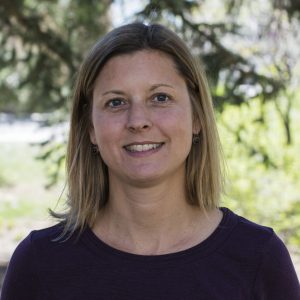
Kelly Jones is an Associate Professor of Ecological Economics in the Department of Human Dimensions of Natural Resources. She addresses social-ecological systems questions related to human impacts on the environment and in turn, how environmental change affects society. In Colorado and Mexico, Kelly is collaborating with physical and ecological scientists to generate evidence on how novel watershed governance partnerships can contribute to water security. This includes understanding what factors lead to the emergence of watershed partnerships; evaluating the impacts of financial investments on economic and social outcomes; and assessing tradeoffs and synergies in the protection of multiple ecosystem services. Jointly these efforts are informing how watershed partnerships prioritize their investments in order to optimize their environmental, economic and social outcomes. Specifically, within Colorado, the research team is using the knowledge generated from their project to develop a spatial decision support tool that can be used by stakeholders to prioritize where to invest in wildfire risk mitigation activities for water security. Her research team in Mexico has used their findings related to environmental, economic and social impacts of watershed partnerships to develop a series of future scenarios, and engaged stakeholders through a role playing workshop to determine what changes they would like to make to existing watershed programs in order to enhance outcomes. More details on these research projects and others can be found at her website, sites.warnercnr.colostate.edu/kelly-jones
